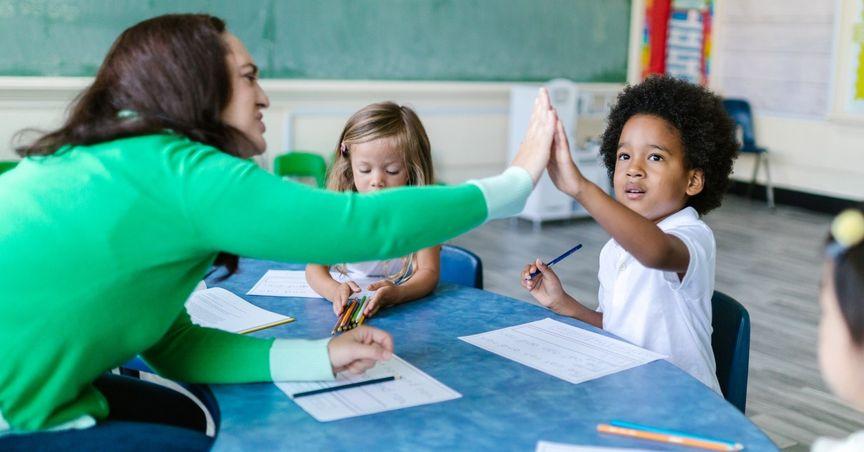Business education is a dynamic field. It is constantly evolving. Traditional teaching methods are constantly evaluated and updated. Individual narratives have become very influential. They model creating a more stimulating and relevant learning journey for students. This work examines the application of individual narratives. Focusing on specially designed examples of personal narrative essays.
The Connection between Personal Narratives and Learning
Personal narratives allow students to relate the course material to their own experiences. Theory combined with real-life stories makes learning more accessible and engaging. When taking business courses, sometimes students themselves have to wonder how to write a personal narrative essay to tell their story in class. And if you don't know how to write or you don't have an understanding of how your story should look like, created personal narrative essay examples will come to your rescue at any time. By studying them, it will be easier for you to understand where to start and find an example of the narrative format you need. This way, you will be able to tell your personal story, which may inspire your fellow business academy students or other students in the future.
Curriculum Integration
Incorporation in Classes: Through discussions, lectures, and assignments, personal narratives can be seamlessly involved into classes. Professors may narrate their own experiences or employ customized personal narrative essay examples that align with business realities.
Application in Examinations: Private experiences can be integrated into exams to deepen assessments and stimulate critical thought processes.
Enhancing Engagement with Personal Narratives: Utilizing personal narratives across various course elements, from reading materials to assignments, encourages students to immerse themselves more deeply. This active engagement is particularly beneficial in business education, where real-world skills and understanding are pivotal.
Case Studies- Bringing Theories to Life: Personal narratives also act as an entrance to case studies, wherein students dissect actual business situations. These narratives produce context, rendering theories real and enhancing long-term retention of material.
Emotional Connections through Personal Narratives: Emotion is vital for memory, and individual narratives invoke strong emotional responses. Crafted personal narrative essay examples can stimulate feelings such as empathy or curiosity, facilitating a deeper and long-lasting impact.
 Image source: Pexels.com
Image source: Pexels.com
Technology's Role in Augmenting Personal Narratives: The technological evolution enables the transcending of personal narratives beyond mere words. Multimedia presentations, videos, and podcasts can be utilized, along with virtual and augmented reality to create engaging explorations of business themes.
Collaboration via Personal Narratives: Encouraging students is extremely important. There is a need to share your stories. They promote cooperation and form a community. Group exercises can improve teamwork and communication. Because they require an exchange of experience. Students analyze created personal examples of stories.
Considerations and Challenges: Despite its potential, implementing personal narratives in business education entails challenges. Ensuring relevance and position with course goals demands meticulous planning. Inclusion requires acknowledging the variety of student backgrounds.
Reflection and Ongoing Evaluation: Ongoing expression and evaluation are crucial to fine-tune personal narrative strategies. These strategies fluctuate needs of business education and includes student reactions and feedback.
The Inclusivity of Personal Narratives in Business Education: Personal narratives support inclusivity. They honor diverse voices and perspectives. Encourage students from different cultural and social backgrounds to share their stories. business education becomes more accessible and fair. This emphasis on inclusiveness improves the learning environment. It promotes the development of empathy. It creates openness and gives students a better understanding of the global business landscape.
Bridging Academic and Professional Worlds: Integrating personal narratives also creates a bridge between academic theories and professional practice. Use examples from the real world and life experience of professionals. Students are offered an idea of the practical application of knowledge. This correlation between science and industry prepares students for the professional world. Matching theoretical knowledge with skills is a necessity today.
Sustainability and Ethical Considerations through Narratives: Individual narratives introduce discussions. They will create a discussion about sustainable development and ethics in business. They discuss real cases of corporate responsibility. Students talk about environmental protection. Moreover, create successful examples of ethical leadership. Personal narratives will help students. They provide insight into the wider social impact of business decisions. This perspective promotes the development of a sense of responsibility. It creates a holistic approach to business management. It educates future effective leaders who value principles.
Adapting to Remote Learning Environments: In an increasingly virtual learning atmosphere, personal narratives can help humanize online education. Through video storytelling, interactive forums, and collaborative projects, individual narratives can bridge the physical distance in remote learning, fostering a sense of community and connectedness. Sustainability and inventiveness are demonstrated in this situation. The modern educational system requires these attributes. They serve as an example of the use of personal narratives in various learning settings.
Assessing the Impact of Personal Narratives: Ongoing research is being done to determine how personal narratives affect learning results. To optimize their impact, this is crucial. Engagement among students is observed. The ability to comprehend and think critically is examined. Personal narratives can be used differently by teachers to accommodate different learning preferences and styles. Such evaluation encourages ongoing improvement. Modifying teaching techniques is possible. Additionally, it guarantees that personal narratives will continue to be a dynamic and flexible element in business education.
Conclusion
A Versatile and Responsive Tool: Through the application of inclusiveness, education embraces inequality. The academic and professional gap is narrowing. This is facilitated by adaptation. Virtual learning, individual narratives are a universal tool. Their integration is an advanced approach. He recognizes the complexity of today's business environment. There are various needs of modern students. Innovations are constantly introduced. Moreover, is evaluated by them. Therefore, teachers can create an enriching and transformative educational experience. In addition, to prepare students for success in the fast-paced business world.



